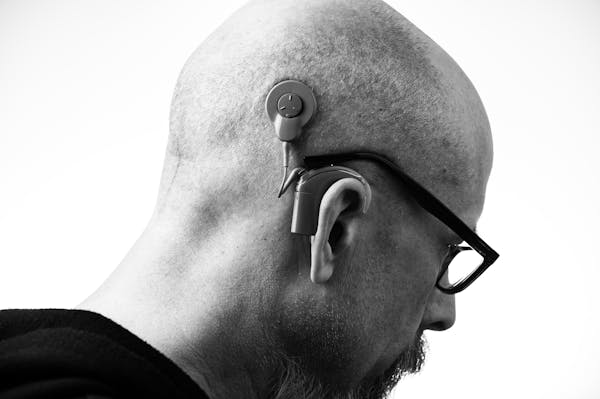
Are you among the 37.5 million US residents over 18 years troubled with hearing impairment? Then chances are that you are facing additional challenges associated with hearing troubles.
These challenges include:
- The struggles of communication
- Social interaction and social exclusion
- Safety issues, elevators not working correctly, traffic sounds not being heard
In addition to these difficulties, self-esteem and confidence decline since people with hearing trouble tend to be ashamed that others know about it.
However, the social stigma around it is like a thick blanket that you must avoid and be comfortable being yourself.
Causes of Hearing Impairment
Several factors can cause hearing impairment. These include:
- Age – As you get older, your hearing naturally decreases. Your ear canals become narrower, and your bones begin to shrink. This changes how sound waves travel through the ears, making it harder for you to hear.
- Genetics – About 50% to 60% of hearing impairment in babies is due to family history. If one or both of your parents had hearing loss, there is a greater chance that you could also have it.
- Use of certain medications – Some medications can make you more likely to develop hearing loss. For example, Tepezza, a medication used to treat thyroid eye disease, can cause hearing loss. Thyroid eye disease is a common condition. If you are diagnosed with it, you will likely have to take Tepezza since it is the most commonly prescribed medications.
But you may develop hearing problems after taking Tepezza. If so, talk to your doctor about whether the condition is reversible and see if any treatment options are available. In the meantime, slap the manufacturer with a lawsuit for not warning you about the adverse effects. Filing a Tepezza lawsuit will help you get compensation for your hearing loss.
Likewise, medical conditions like diabetes, loud noise, chemical exposure, etc., can also trigger hearing loss.
The good news is whatever the cause, hearing aids can help you overcome challenges and improve your quality of life. But before we discuss how, let’s look at what hearing aids are.
Hearing Aids to the Rescue
Hearing aids are an excellent solution for people with hearing impairment. Hearing aids are not just for older adults; 28.8 million US residents can benefit from this technology, including children and young adults diagnosed with hearing loss at an early age.
A mic in a hearing aid retrieves sounds and then transfers them to the processor. The processor makes adjustments based on what you want to hear clearly. It then sends the adjusted signal back through the earpiece. It amplifies and filters the sound, making it more natural than just listening with your ears alone.
Many people don’t realize how easy it is to wear hearing aids. They look like small devices that fit snugly in the ear canal or behind the ear. Hence they are also known as “in-the-ear” or ITE. They’re light and comfy, and you’ll forget you’re wearing them.
Must-Have Features in Today’s Hearing Aids
Since their debut in the early 1700s, hearing aids have evolved significantly. Hearing aids today encompass a variety of functions that might help you enhance your hearing and life in general.
However, knowing what qualities to look for while buying one might take some time. But fret not since we’ve compiled a list of the must-have features you should watch out for.
Invisible Appearance
Invisible hearing aid technology offers a discreet appearance. This is essential for a bunch of reasons. First, it gives you a sense of confidence and self-esteem. Second, it allows you to participate in social activities without feeling embarrassed or ashamed.
Third, invisible hearing aids are great for those who wish to mask their hearing damage from others. Probably because they feel ashamed or simply because they don’t want anyone else to know about their condition and thus judge them negatively on that basis alone.
If you’re among those who haven’t been using hearing aid technologies owing to perceived stigma, then invisible hearing aids are a blessing. They allow you access again into the world without being physically reminded of your disability.
Noise Reduction
Noise reduction helps to lower the level of noise in the vicinity. This function is critical for those who are deaf or hard of hearing. It allows them to hear speech more clearly, even in noisy environments.
For example, suppose you have a hearing aid with a noise-reduction feature. And you visit a crowded restaurant. Despite much chatter, this feature helps you understand what other people are saying without straining your ears.
Noise reduction isn’t necessary if you only have mild hearing loss. However, maintaining conversations in challenging environments like busy restaurants or noisy workplaces can make an enormous difference.
Bluetooth Wireless Technology
Bluetooth wireless technology connects your hearing aids to other gadgets. You may now stream audio from your mobile, iPad, or desktop. It also allows you to control your hearing aids wirelessly.
This is an excellent feature for active people who want to hear their surroundings without being tied down by wires or cords or managing multiple devices at once, like hearing aids and earphones.
Currently, the market size of Bluetooth hearing aids is USD 2.2 bn. By 2030 this figure is predicted to hit USD 4.1 bn. The factor responsible for such a hike is increased popularity among younger generations due to ease of use.
Rechargeable Batteries for Easy Maintenance
Batteries are a major cause of annoyance for those who have hearing impairment. They’re often expensive to replace. Besides, they can be challenging to find in certain places. Rechargeable batteries are a great alternative here.
Rechargeable hearing aids are more convenient and accessible to maintain than standard ones. Depending on the model, they have a charging station plugged into an outlet or USB port on your computer, tablet, or smartphone charger.
Simply place the hearing aid in its charging cradle overnight, and it will be ready to use the following day again.
Compatibility With Other Medical Devices
Knowing if the technology is compatible with other medical devices is essential for a hearing aid.
For example, if you have an implantable cardiac pacemaker or defibrillator (ICD), it may be necessary for your audiologist to use special programming features on the device. This helps ensure they don’t interfere with one another.
In addition, some people who use cochlear implants can benefit from having an ICD and cochlear implant working together. This is known as bilateral integration.
The good news is that many modern hearing aids are compatible with all medical devices. But there are a few exceptions.
If you have any type of implantable device, including those listed above, as well as tracheotomies and nerve stimulators, speak with your doctor before purchasing a hearing aid.
Variable Programming
Variable programming refers to the ability of a hearing aid to adjust its settings automatically based on the environment.
For example, if you’re sitting in an auditorium listening to a lecture and someone starts speaking loudly, your device will automatically raise its volume and frequency to hear better.
Variable programming is beneficial for people with trouble hearing in different environments, like those with tinnitus or those who frequently attend significant events with lots of background noise.
Voice Assistance and Speech-to-Text Functions
Voice assistance and coaching functions are available in most modern hearing aids. Voice recognition allows the device to recognize the voice of the user or other people, such as family members or friends.
It also recognizes these individuals’ commands that have been programmed into the device. This way, instead of searching through menus, users can simply say turn up or turn down, and their hearing aids will adjust accordingly.
Conversely, speech-to-text converts speech into written text so that it appears on your smartphone when someone speaks with you. The text is saved until after an interaction has ended so that it doesn’t interrupt conversations unnecessarily.
Conclusion
Hearing loss is a significant problem that impacts countless people across the globe. Getting help promptly is vital, but knowing where to start might take time. The good news is that there are many different kinds of hearing aids available today, each with its unique features. This article has outlined some of the most useful ones for those who want an easy way out of their struggles with hearing impairment.







